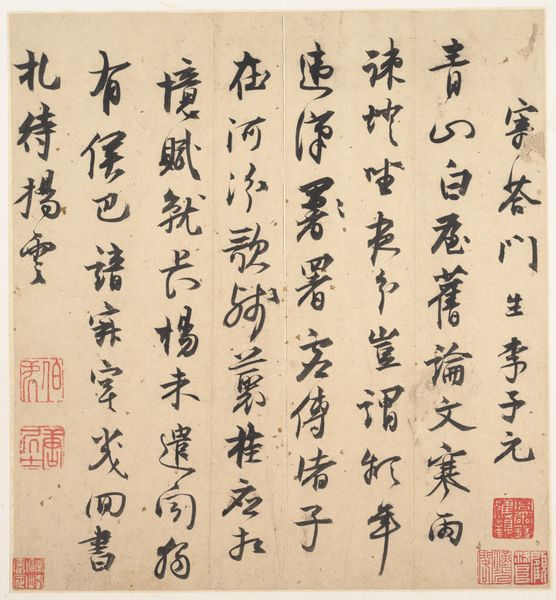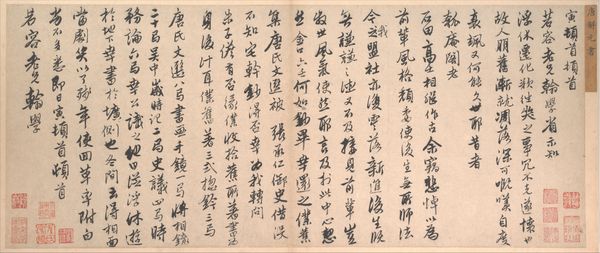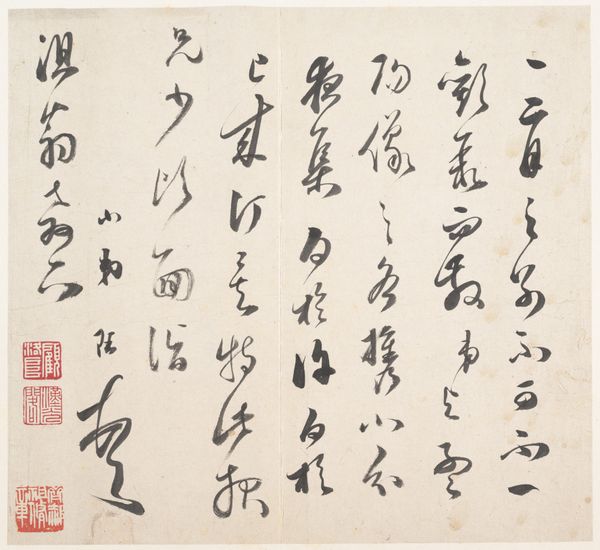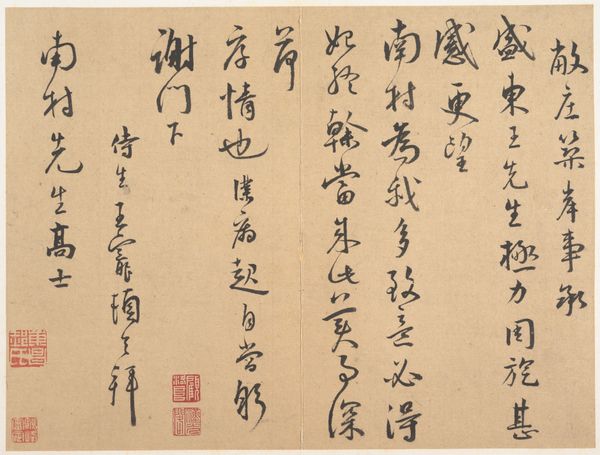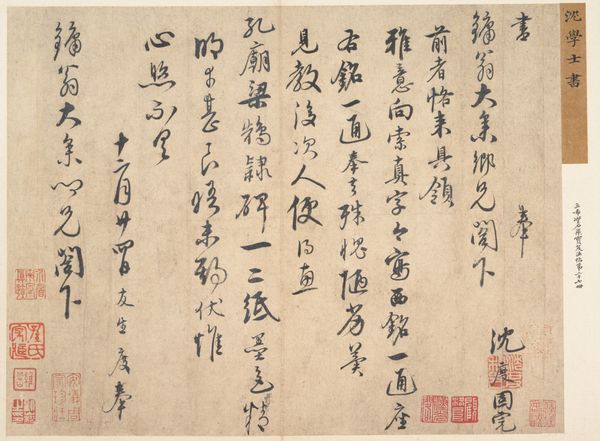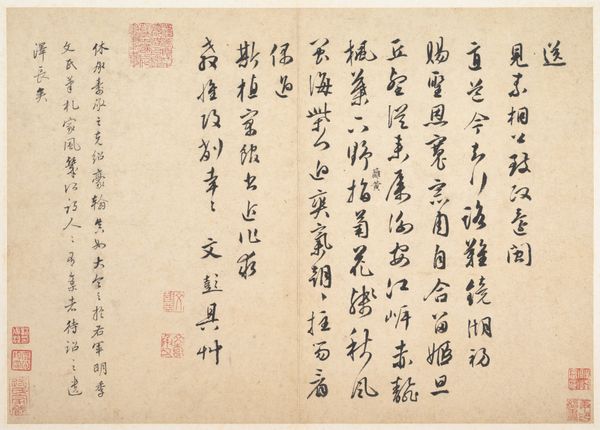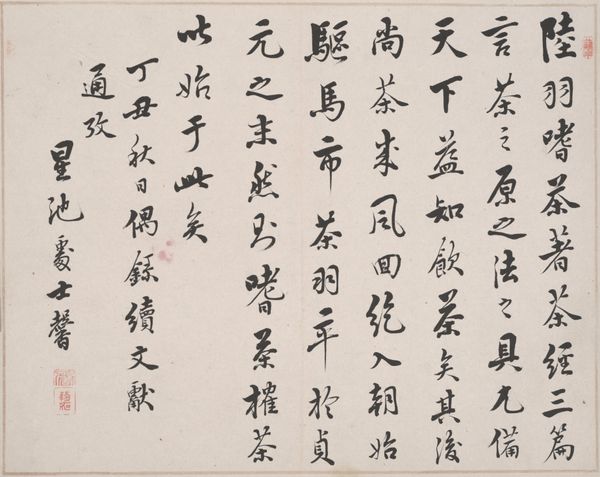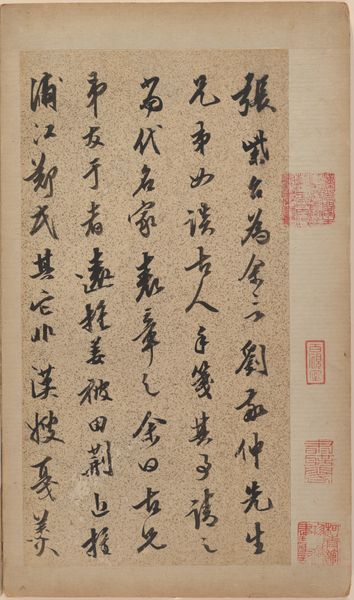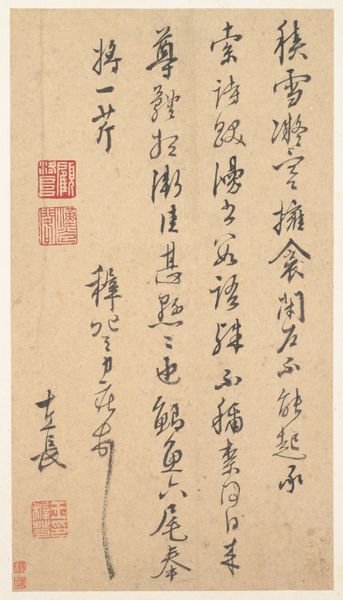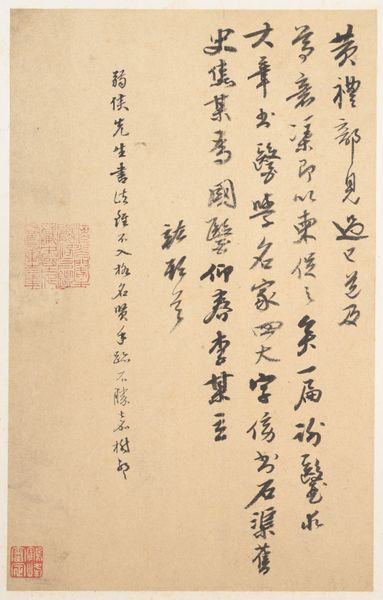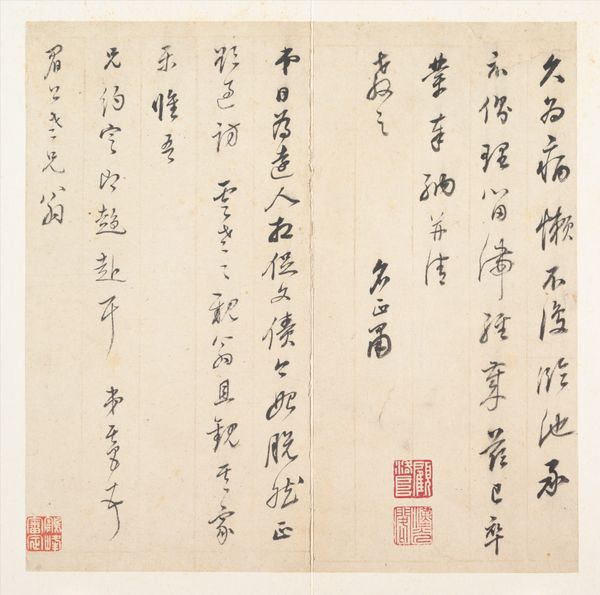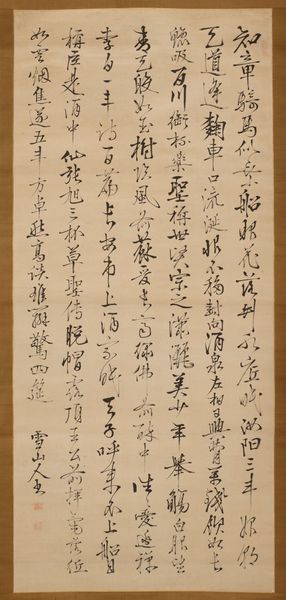
paper, ink
#
asian-art
#
paper
#
ink
#
calligraphy
Dimensions: 8 13/16 x 9 5/8 in. (22.4 x 24.4 cm)
Copyright: Public Domain
Editor: Here we have “Letter,” created sometime between 1600 and 1632 by Song Jue. It’s ink on paper, and honestly, it looks more like abstract art than writing to me. The strokes are so expressive! How should we approach understanding this piece? Curator: I'm interested in this piece primarily through the lens of production. The ink and paper themselves are central. Where did these materials come from? What labor was involved in preparing them? This impacts how we see the finished work. Editor: That makes sense. It’s easy to forget about the process behind something like this. So, the materials themselves tell a story? Curator: Precisely! Ink, for example, was meticulously created, its quality a marker of status. How does the cost and effort of preparing this writing medium shift our understanding? Calligraphy becomes a performative act, not just conveying words, but also a demonstration of access. What social class could have produced this work? Editor: Hmm, I guess someone of some status given that they were the sole owner of these fine materials? It’s interesting how thinking about the material process adds to our understanding rather than distracting from it. What do you notice about its materiality now? Curator: Notice, for example, how the ink bleeds slightly in certain areas. Was this intentional? A commentary on the fluidity of meaning itself, or a practical consideration relating to the absorbency of the paper? These elements inform our reading as much as the text's literal meaning. Do you see any evidence that it was created from specific pigments from a region or a workshop of specialists? How might a modern copy using cheaper, faster materials differ? Editor: I see your point! Analyzing the material shifts my attention away from the literal content to the skill and socio-economic circumstances involved in making it. Now, I see this "Letter" as much more than just a message; it embodies the historical context of its creation through the production of its very materials. Curator: And that's where the true value, beyond aesthetics or even legibility, lies. The material choices embedded in its making.
Comments
No comments
Be the first to comment and join the conversation on the ultimate creative platform.
